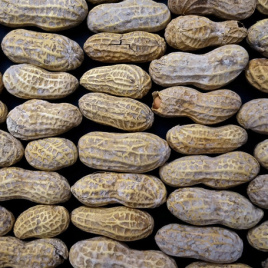A study of the world’s megacities, those with a population greater than 10 million people, highlights the difficulties in resource use facing developing and developed cities around the world. As of 2010, there were 27 megacities around the world, and it is likely there will be 10 more by 2020. Developed cities, such as New […]
Tag: Ontario
Vote for your favorite research
From the discovery of neutrinos to recognizing the effect of grapefruit on our ability to metabolize drugs, Ontario’s universities have contributed ground-breaking research. What do you think the top research should be? The Council of Ontario Universities is asking the general public to vote for their favourite ‘game-changing research’ here.

Allergies move from patient to patient through blood transfusions
Anecdotal evidence has shown that allergies can sometimes be transferred between patients through blood and plasma transfusions. Researchers believe transfusions can temporarily cause food-based allergies in recipients, however they are so rare they do not believe that individuals with existing allergies should be excluded as donors. As a recent example, an eight-year-old boy in Toronto […]
Younger immigrants in Canada at higher risk of developing inflammatory bowel disease
The younger an immigrant is when he or she arrives in Canada, the higher their risk of developing inflammatory bowel diseases (IBD) such as Crohn’s disease and ulcerative colitis according to new research. The study found that the children of immigrants from some areas of the world have a 14% increased risk of developing IBD […]
Oncologists weigh the pros and cons of gene-expression profiling
Should women diagnosed with early-stage breast cancer have chemotherapy? To help make that choice, some physicians recommend gene-expression profiling (GEP) tests to identify patients who may benefit from the treatment. Carrying the brand name Oncotype DX, this test analyzes the patterns of 21 different genes within the cancer cells to help predict how likely it […]
Ontario’s life sciences organizations generates $40 billion in annual revenue
Ontario life science industries play a big role in the provincial economy. Companies in the agricultural, pharmaceutical, medical equipment and medical research sectors employ around 83,000 people in Ontario and generates near $40 billion in annual revenues, a new report from Life Sciences Ontario (LSO) shows. However, challenges still needs to be addressed such as the […]
Volcanic metals hitch a ride on bubbles from Earth’s crust
During a volcanic eruption, massive amounts of sulphur are released into the earth’s atmosphere. Now a new study has looked at the source of the sulphur and its movement. The research focused on molten rock known as magma which exists deep within the Earth’s crust. This magma contains what is known as ‘sulphide melts’ – […]
How heritable is autism?
A new study shows how complex it is to understand autism from a genetic point of view. Researchers sequenced the genomes of 85 families with two children who are both affected with autism spectrum disorder (ASD). They found that the majority (around 70%) of affected siblings did not share common mutations. Greater than 100 susceptibility […]

Fossil discovered by young boy in PEI shines light on the origin of turtles
Researchers have discovered a new genus and species of reptile from a 300-million-year-old fossil from Prince Edward Island. The fossil was found in PEI by a young boy and its family, and the species was named in his family’s honour, Erpetonyx arsenaultorum. This discovery indicates that reptiles at the end of this era were more […]
If you’re outgoing, so is your avatar
Judging someone’s personality is no easy task, especially when all you can see is an avatar and not the real person. However, new research suggests that people can make some accurate personality judgements after seeing customized avatars, at least for some people. The researchers found that outgoing and sociable individuals typically create avatars that communicate […]
Over fifty new potential drugs against Ebola
Researchers have identified 53 existing drugs that could prevent the entry of Ebola virus into human cells. To achieve this result, they screened 2816 drugs that are already approved by the Food and Drug Administration in the US. These drugs are already used as antibiotics, antihistamines (against allergies), antipsychotics or against cancer. They now need […]
A new kind of stem cell
Scientists have observed a new class of stem cell with the capacity to turn into nearly any cell type. Called F-class cells for the fuzzy appearance of its colonies, these cells could potentially be used in regenerative medicine and drug discovery. In a second related paper, researchers with the Project Grandiose Consortium announce a new […]
No apparent correlation between HPV vaccine and risky sexual behaviour
Vaccinating teenage girls against the human papilloma virus (HPV) does not appear to increase risky sexual behaviour. There was concern that receiving the vaccination would cause an increase in such behaviour, however this study shows the concern is unfounded and should not prevent vaccinating girls at a young age. The study followed over 260,000 girls […]

How risky is ballast water?
Many invasive species – e.g. zebra mussels – hitch a ride across oceans in ships’ ballast water, but a new study shows that some trips may pose more risk than others. Researchers sampled ballast water each day as ships crossed the ocean and discovered that invasive species are more likely to survive a shorter trans-Atlantic […]
Researchers identify genetic mutation responsible for a serious disorder common in Inuit people
Inuit will now be able to be quickly diagnosed with a blood test for a genetic disorder that prevents the absorption of sucrose, causing severe diarrhea. Researchers have identified the genetic mutation responsible for the disorder, called congenital sucrose–isomaltase deficiency (CSID), which affects up to one Inuit out of ten. They have isolated DNA from the […]
Atmospheric pollutant hides in the dirt at night
A new explanation for rising and falling concentrations of the atmospheric pollutant nitrous acid (HNO2 ) could help predict ‘smog days’. Nitrous acid is quickly destroyed by sunlight in the atmosphere, but nevertheless it can build up to detectable levels during the day, pointing to an unknown source. The new study explains how HNO2 created […]
